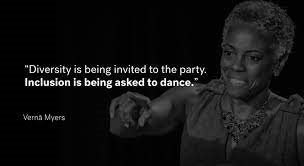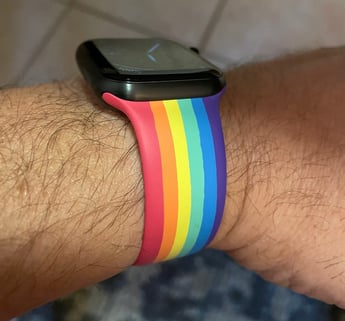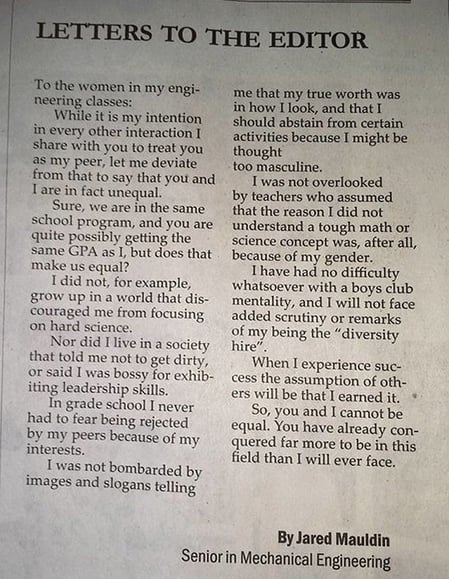“It never seemed a threat to my masculinity
He only introduced me to a wider reality.” - Neil Peart
Diversity and inclusion are core ISA values, along with excellence, integrity, collaboration, and professionalism. We strive to be a global, diverse, and welcoming organization.
 But what do we mean by diversity and inclusion? Diversity is the representation of different people in an organization: Inclusion is ensuring that everyone has an equal opportunity to contribute to and influence that organization. Author and thought leader Verna Myers explained it this way, “Diversity is being invited to the party. Inclusion is being asked to dance.” I feel that equity goes right along with diversity and inclusion, ensuring that processes and programs are impartial, fair, and provide equal possible outcomes for everyone.
But what do we mean by diversity and inclusion? Diversity is the representation of different people in an organization: Inclusion is ensuring that everyone has an equal opportunity to contribute to and influence that organization. Author and thought leader Verna Myers explained it this way, “Diversity is being invited to the party. Inclusion is being asked to dance.” I feel that equity goes right along with diversity and inclusion, ensuring that processes and programs are impartial, fair, and provide equal possible outcomes for everyone.
Why does ISA have diversity and inclusion as core values? Does the inclusion of new people create a zero-sum game, with the exclusion of those who are already there? Does equity give preference to some more than others?
 Businesses are already aware of the benefits of being diverse, equitable, and inclusive, experiencing better financial performance and higher customer satisfaction. Companies in the top quartile for gender diversity in executive teams are 21% more likely to have financial returns above their industry’s national median than companies in the fourth quartile and organizations that successfully create an inclusive culture have 39% higher customer satisfaction scores than those that do not. Inclusive cultures also reduce turnover rate and increase innovation.
Businesses are already aware of the benefits of being diverse, equitable, and inclusive, experiencing better financial performance and higher customer satisfaction. Companies in the top quartile for gender diversity in executive teams are 21% more likely to have financial returns above their industry’s national median than companies in the fourth quartile and organizations that successfully create an inclusive culture have 39% higher customer satisfaction scores than those that do not. Inclusive cultures also reduce turnover rate and increase innovation.
The Royal Academy of Engineering also released a case study toolkit on increasing diversity and inclusion in engineering. Case studies from engineering companies such as IBM, Airbus, Atkins, BAE Systems, bp, Rolls Royce, and CH2M are included, showing how diversity and inclusion have become a core focus, and with good reason.
The engineering skills shortage has been debated for many years. The 2020 Global Engineering Capability Review provides a very stark view of this shortage:
"Today, there is a severe lack of such engineering and technical capacity; a skills gap that is exacerbated by the introduction of new and emerging technologies, and by infrastructure developments that do not include and involve local workforces.
So, without intervention, the pattern of increasing occupational accidents and fatalities is likely to continue."
There can be no better example of how diversity and inclusion is not a zero-sum game than tackling this skills gap. I believe this must be a priority for all engineering societies. ISA can help lead the way, embracing people from all underrepresented groups and giving them a place and a voice so they are part of the solution.
The Executive Board established a volunteer diversity review task force this past year, asking them to specifically look at our policies and opportunities to improve diversity, equity, and inclusion in our leadership. We also have groups reviewing processes in hopes of increasing diversity of some of our recognition programs.
We are all able to and should strive to contribute to our diversity and inclusion values:
- Be role models internally and externally to promote opportunities for all groups to progress in the society.
- Communicate and advocate diversity and inclusion.
- Use data to raise awareness, measure progress, and support diversity in our volunteer groups.
- Identify, address, and eliminate unconscious bias/challenging bias. Try out the implicit association tests at Harvard’s Project Implicit.
- Implement and follow guidance on how to respond to unacceptable or unhelpful behavior in the society.
- Mentor individuals from underrepresented groups, in ISA and in our day jobs.
 As always, feel free to contact me if you have any thoughts or comments. What have been your experiences? Share with me any ideas on how to make ISA a more diverse, equitable, and inclusive society.
As always, feel free to contact me if you have any thoughts or comments. What have been your experiences? Share with me any ideas on how to make ISA a more diverse, equitable, and inclusive society.
Diversity, equity, and inclusion is a win-win game for the society and the wider profession. Now more than ever we all need to work together to build a better world through automation.




